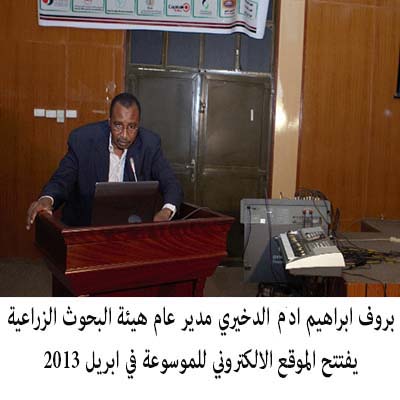معادن التربه
السماد العضوي الصناعي compost
نتيجة التوسع الزراعي واستصلاح مساحات جديدة تضاف الي الرقعة الزراعية فان الطلب علي استعمال الاسمدة العضوية يزذاذ لما لها من تاثيرات عديدة في استصلاح كل من الاارضي الزملية والاراضي الجيرية
من كتاب تطور الزراعة في السودان
حسن متوكل محمد عثمان
اضغط هنا
A comparative study between soil chemical properties before and after
leaching of salts by irrigation water and tillage treatments in a calcareous soil
Salah Abdel Rahman Salih1 , Abdel Moneim Elamin Mohamed2 , Mohamed Abdel
Mahmoud Elsheikh3 and Abdel Rahman Mohamed Nour4
Abstract: The research was conducted during two summer seasons of 2009 and 2010 at the Demonstration Farm of the Faculty of Agricultural Technology and Fish Science, University of Neelain, to determine the different between some chemical composition of the soil before and after leaching of salts by irrigation water quantities and tillage treatments. The two water quantities used were crop water requirement + 10% or 20% of the crop water requirement as a leaching fraction. Four tillage treatments namely, disc plow, chisel plow, disc harrow and zero tillage were used. The variables compared were pH, sodium adsorption ratio (SAR), electrical
conductivity (ECe) and calcium carbonate (CaCO3). The results indicated that pH and CaCO3 increased but SAR and ECe decreased during the two seasons.
Effect of Irrigation Water Quantities and Tillage Treatments in Leaching Salts in
Salt-affected Soils.
1Salah Abdel Rahman Salih, 2Abdel Moneim Elamin Mohamed and 3Mohamed Abdel Mahmoud
Elsheikh
1,3Department of Agricultural Engineering, Faculty of Agricultural Technology and Fish Science,
University
of Neelain.
2Department of Agricultural Engineering, Faculty of Agriculture, University of Khartoum.
ABSTRACT
This study was conducted during 2009 and 2010 summer seasons at the Faculty of Agricultural Technology and Fish Science Farm, University of Neelain (Jebal Awlia area) south of Khartoum to investigate the effect of different amounts of irrigation water and tillage treatments on salt leaching in the root zone. The water quantities used to leach the salts were crop water requirement (CWR) + 10% or 20% of the crop water requirement as a leaching fraction (L.F). Four tillage treatments namely, disc plow, chisel plow, disc harrow and zero tillage were used. The variables compared were pH, sodium adsorption ratio, electrical conductivity and calcium carbonate percentage. The results showed that CWR + 20% L.F. gave a higher leaching than CWR + 10% L.F. Whereas, chisel plow had the superiority in leaching of salts followed by disc plow then disc harrow and last zero tillage. The best leaching resulted when CWR + 20% L.F.
was used in combination with chisel plowing. Also the results showed that salts were leached from the upper soil layer to the lower ones during the two seasons. Key words: Crop water requirement, tillage, leaching fraction, electrical conductivity, sodium adsorption ratio.


